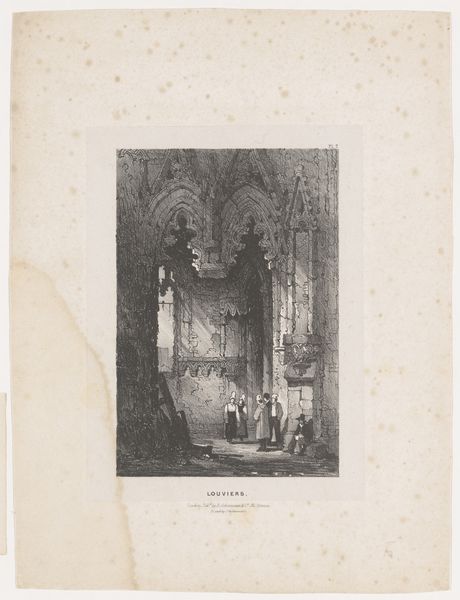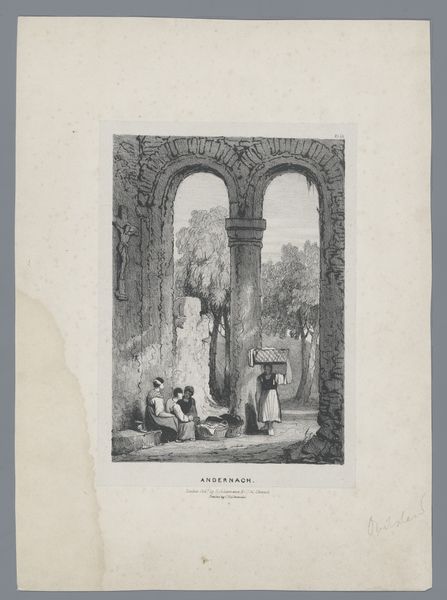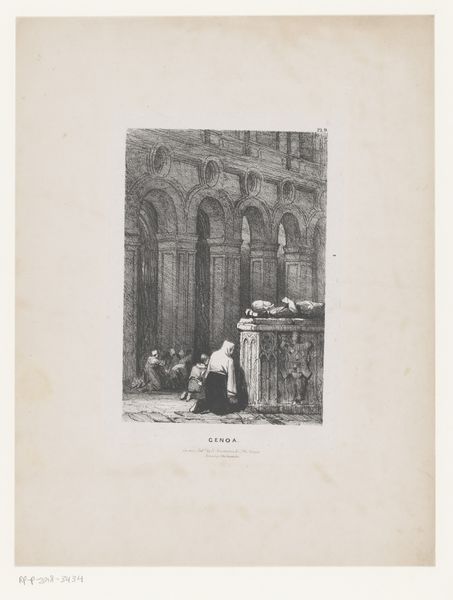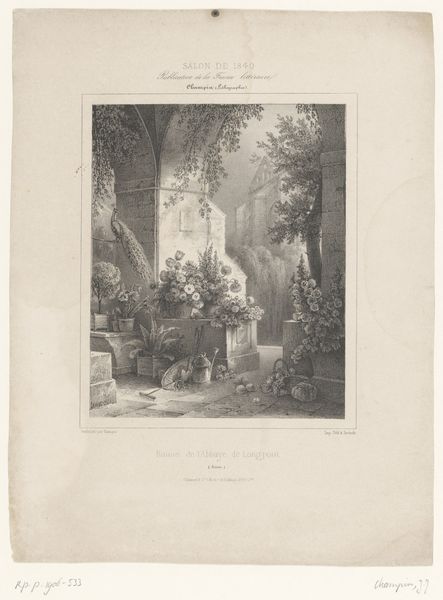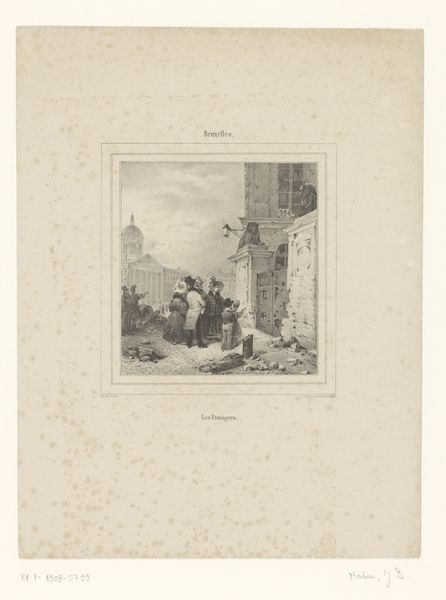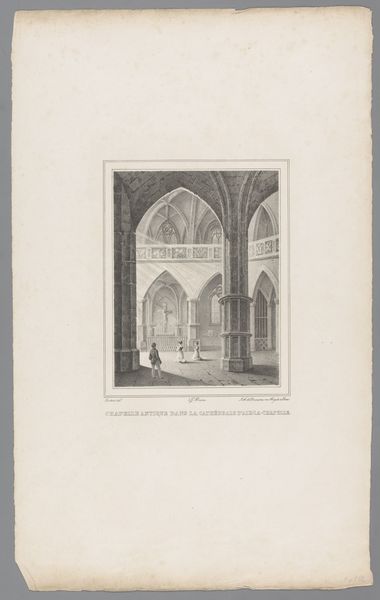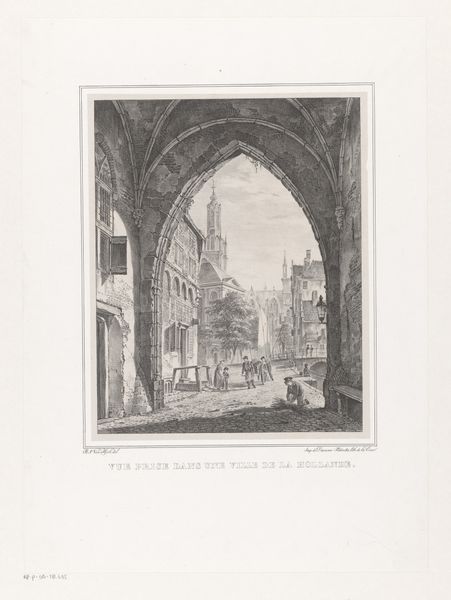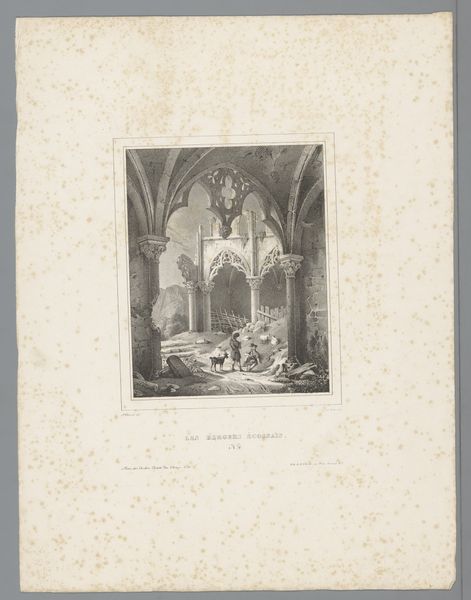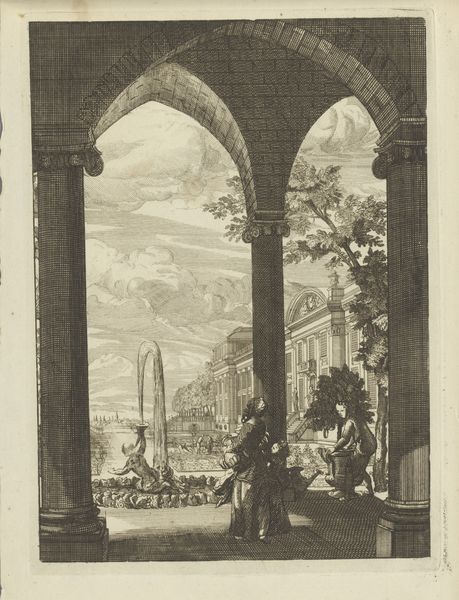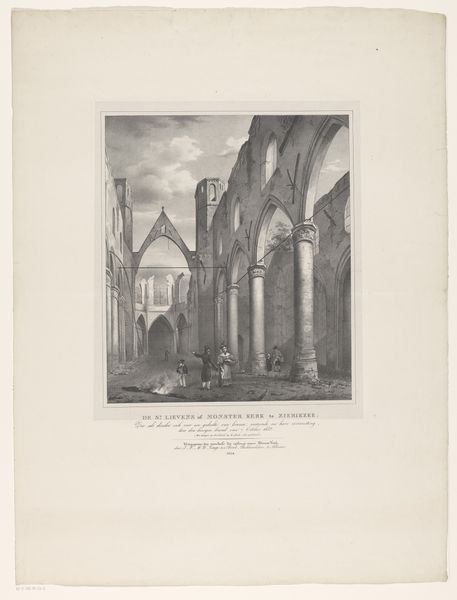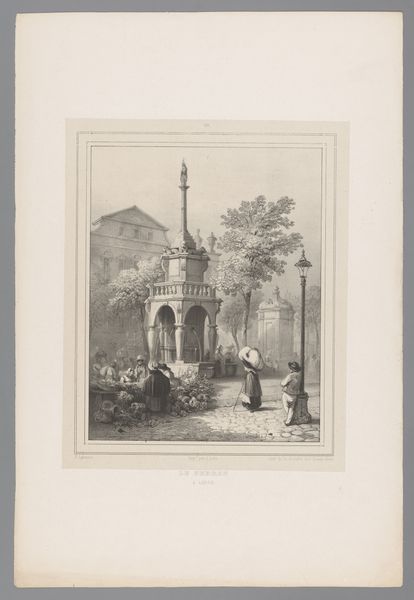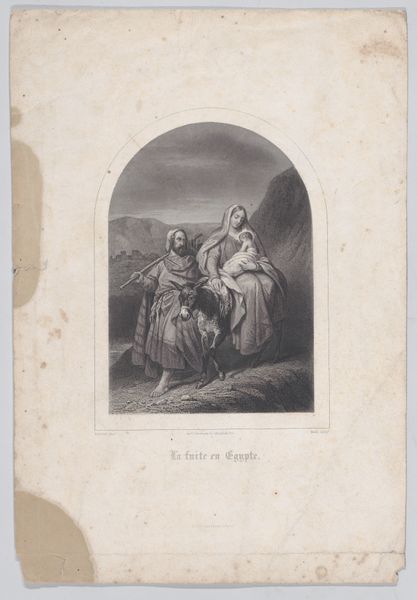
drawing, paper, ink
#
drawing
#
pencil sketch
#
landscape
#
figuration
#
paper
#
ink
#
romanticism
#
history-painting
Dimensions: height 298 mm, width 214 mm
Copyright: Rijks Museum: Open Domain
Curator: Samuel Prout’s 1832 drawing, "Kerkruïne in Sint-Omaars," invites us into a dance of light and shadow. It’s currently housed at the Rijksmuseum. What’s your initial take on it? Editor: There’s a stark contrast between the imposing architecture and the everyday figures. It feels melancholic. A beautiful ruin, but a ruin nonetheless. It's an assertion that everything is in decline, particularly church institutions. Curator: I love that. It feels like a stage set, doesn’t it? Those gothic arches are dramatic. Prout, with his ink and pencil, captured such texture in the crumbling stone. There's a certain romantic allure here, in the crumbling majesty of time. Editor: Absolutely. The picturesque quality is unmistakable. Prout employs a technique of architectural draftsmanship that creates a layered narrative, subtly probing societal power dynamics embedded within historical and religious structures. How much power has the church held over our lives for centuries, after all? Curator: Power and fragility, existing together. The Romantic period artists were keen to show emotional responses to these sorts of images, I can sense the slight wistfulness and a celebration of gothic architecture and historical reflection. How does seeing it within the context of Romanticism impact how you perceive it? Editor: It makes me think about whose stories are prioritized within these ruins. Are we reflecting critically on how such structures became embedded in the landscape? Prout romanticizes what remains—what of all the marginalized identities who never profited from this religious edifice in the first place? Curator: That’s such a powerful reading. I like how it can hold so many perspectives simultaneously: it really embodies the power of a historical moment that reverberates still. Editor: Exactly. It calls on us to actively engage with art as a point of social reflection, a powerful, layered reminder of who and what shapes our world.
Comments
No comments
Be the first to comment and join the conversation on the ultimate creative platform.
